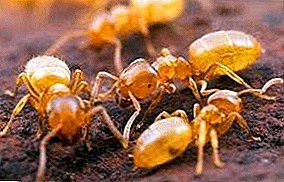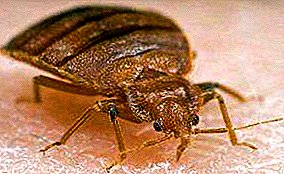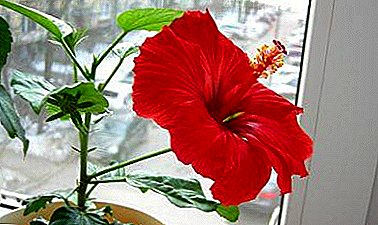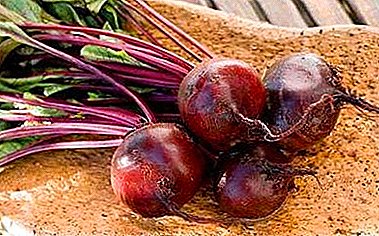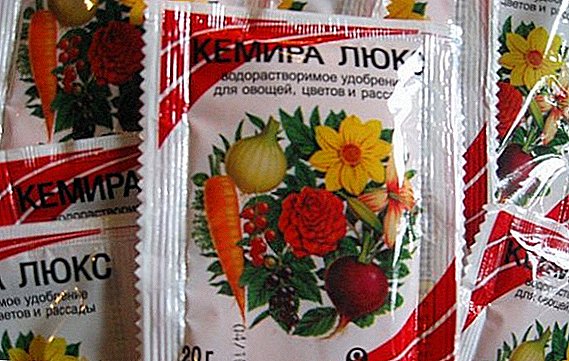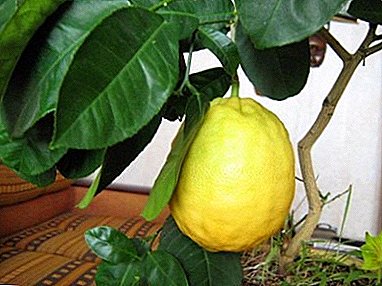
ABOUT the origin of the lemon Panderosa still breeders are debating.
The first version is a natural hybrid created by chance and enshrined in subsequent generations. Another point of view is a variety obtained purposefully in the USA.
Be that as it may, this variety exists and gives rise to new varieties of lemon. Panderosis is the result of crossing lemon and citron.
Specifications
This is a typical representative of citrus with evergreen shiny leaves. Different from other varieties of lemon compact, abundant and early flowering.
Fruit large, in natural conditions or in a garden with proper care, reach a weight of 500 g. At home, 100-200 g. The bark is thick, slightly tuberculate.
The taste and smell of lemons of this variety is quite citrus, but when fully ripe it is less sour.
A photo
Lemon Panderoza: a photo of this variety of a plant and its fruits.



Care
Let's talk about lemon Panderosa: care at home, breeding, pruning and more.
Adaptation to new conditions
After purchasing a lemon Panderosa in the store you need inspect it carefully for pests. Even in the absence of parasites, the plant is adapted in quarantine conditions: in an illuminated place without access to direct sunlight. Daily sprayed and inspected.
If the container is noticeably small the plant, the roots come out of the bottom holes, then transplanted. Gradually accustom the plant to the light, moving closer to the brightest window. During the adaptation of the lemon, they choose a place on the windowsill where he will spend his life.
Lighting
Place some time of the day should directly illuminated by the sun. South orientation windows are quite suitable for this plant. Especially considering the climatic conditions: from November to February the light of the lemon is not enough.
Therefore, everything that comes from the street through the glass should be bright. A very desirable winter light.
Temperature
 In summer, tolerates elevated temperatures.
In summer, tolerates elevated temperatures.
It needs fresh air, so it’s good to keep it by the open window or take it out to the balcony, loggia or garden. In this case, do not leave all day in the open. It is better to create a penumbra in the afternoon.
Panderosa - one of the most thermophilic lemons. It tolerates indoor conditions in winter, but, if possible, it is possible to lower the temperature to +10 g in the darkest months of the year.
At any time of year, the plant responds well to the difference in day and night temperatures with room content. In the summer, this is obtained naturally - as the sun goes down, the temperature in the room where the windows are open descends.
Air humidity
Lemon tolerates dry air, but loves and spraying. In winter, at home, at high air temperatures, it is worth moistening the air around it: put containers in water next to the plant and make sure that they are never empty.
In the summer - according to the situation: if the summer is dry, then the air is moistened, and if it rains, then an open window is enough.
Watering
Lemons - moisture-loving plants. Water them with full moistening of earthy coma. The next watering is done after the earth dries on the surface of the pot to a depth of about 2 cm.
Do not water before - the plant will suffer more from overflow than underfilling: if the edges of the leaves are covered with brown spots, it means that the roots are choking, and maybe rotting from excess moisture.
To correct the situation without consequences will not succeed - the leaves will remain stained, and some roots will wither away. The lump of land should be dried immediately, preferably taken out of the pot for a while. And continue to follow the rules of watering.
Do not overdry and soil. The situation when the leaves have lost elasticity and drooped is the cry of a plant about the need to water it. After wetting for an hour, the leaf turgor is usually restored, but this phenomenon should not be customary.
Flowering and fruiting
 Lemon Panderoza famous for abundant flowering. In the year at home there are 2 - 3 waves of dissolution. Flowers are white with yellow-orange stamen tips, fragrant, in loose inflorescence.
Lemon Panderoza famous for abundant flowering. In the year at home there are 2 - 3 waves of dissolution. Flowers are white with yellow-orange stamen tips, fragrant, in loose inflorescence.
Flowers unfold gradually, each blooms in cool conditions for about a week, not more than 5 days in hot weather.
After flowering in place of fertilized flowers. remain the ovary. Usually the plant itself regulates the number of ovaries, leaves as much as it can “feed”. But in some cases, the owner must intervene. On young trees remove excess ovaries, so as not to weaken the entire plant with early and abundant fruiting.
For the normal development of each fruit on a lemon, at least 15 - 20 leaves are intended. With an excess of ovaries, the plant may cease to give growth to branches and leaves, and will begin to spend forces on the cultivation of fruits. This will significantly weaken the plant, especially since the ripening of fruits lasts up to 10 months, and these fruits are very large.
This video describes how to control the number of ovaries.
Top dressing
Lemons nutrient demanding in the soil. Therefore, fertilizers should be applied regularly. The most balanced is a fertilizer with a direct indication "For citrus."
It contains all the nutrients needed for lemon, in the optimal amount and, importantly, the complex, acidifying the soil, which in any container alkalized with time. If you feed the plant with other fertilizers, it is recommended to add a few drops of lemon juice to the water for irrigation about once a month.
Transfer
Transplant is performed every year. as long as possible. When, because of the size of the plant, it will become difficult for the owner and unsafe for the tree itself, they change the top layer of earth in the tub, how much will be removed without damaging the roots.
The most important thing when transplanting - do not free the roots from the old land! At the roots there is a thin layer of symbiotic fungi visible only under a microscope, which ensures proper nutrition of the plant. If you shake the ground, these mushrooms on the air instantly dry out, the plant will starve and will not take root.
Therefore, lemons are transplanted by the method of transshipment: in a larger pot with ceramic drainage at the bottom, the lemons are moved along with a clod of earth immediately after being removed from the former pot. Free spaces are filled with fresh, nutritious soil. After transplantation, feeding is not recommended for a month.
Crown formation
With transplant combine forming pruning. Pinch or cut off branches growing deep into the crown or far to the side. The light should receive each leaf, so the extra branches are removed, and the tree is rotated a little about once a week, exposing the sun to the other side. This contributes to a uniform increase of the crown.
Breeding
 Lemon Panderoza, like other lemons, propagated by rooting cuttings or seeds.
Lemon Panderoza, like other lemons, propagated by rooting cuttings or seeds.
Lemon cuttings rooted in water or immediately in the ground in greenhouse conditions. The roots germinate for a long time, even in spring and summer.
It is very characteristic of Panderaza - the release of buds before the formation of roots. These buds pinch. A sure sign of rooting - the emergence of a new leaf.
After transplanting in a separate pot for the first week, the plant is kept away from direct sunlight, under a transparent cap, which is removed during the day - they teach the young tree to the conditions of life.
With seed reproduction material taken from the fruit Panderoza. Bones are sown at any time, put in a warm place, do not allow overdrying of the soil, and provide good light when shoots appear. From one seed leaves 1 - 5 shoots.
A month after germination, the seedlings are fed. In separate containers seated after the appearance of two true leaves.
Plants derived from seeds do not always accurately convey the characteristics of the parent variety. In fruiting come much later than grown from cuttings, not earlier than the 7th year. In order to speed up the fruiting, purposeful pruning is required - flowering occurs on the 4th order shoots.
From these videos, you will learn even more information about the care of Panderose lemon.
Diseases and pests
 Lemons are attacked mites. This contributes to dry air and soil. If the plant is kept in optimal conditions, infection will not occur. Loves lemons and mealybugs.
Lemons are attacked mites. This contributes to dry air and soil. If the plant is kept in optimal conditions, infection will not occur. Loves lemons and mealybugs.
When detecting cottonballs, they are removed by hand, and the plant itself is wiped with a weak alcohol-containing solution, the best live beer - you get a combination with top dressing. Insecticides are used against aphids and mites.
A healthy plant is rarely attacked by insects, and when meeting them, it easily copes with the effects of contact. Best prevention - The right content and the right care.
If these simple conditions are met, then Lemon Panderoz will delight the hosts for many years. There is evidence that citrus fruits live at home for up to 50 years. The tree is interesting because in adulthood it constantly blooms and bears fruit, and these phenomena not only alternate, but also occur simultaneously.
Fruits hang on it and green and yellow.
If you do not rip the ripe lemon in time, then after a while it turns green again and begins to increase again in size! But in order to observe this, you must have patience and love your pet.
Good luck!


